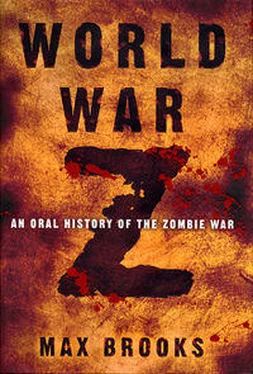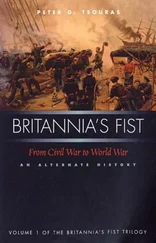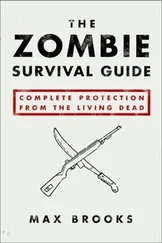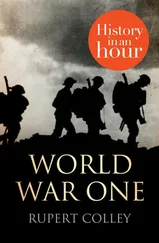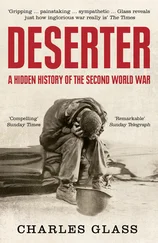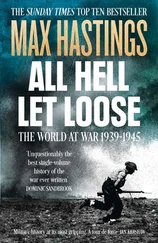Suddenly I was a nobody, an F-6. The world was going to hell and all my vaunted talents were powerless to stop it. When I heard about ADS, the government was trying to keep it quiet-I had to find out from a contact at Cedars-Sinai. When I heard about it, something snapped. Like the time I made my first Super 8 short and screened it for my parents. This I can do, I realized. This enemy I can fight!
And the rest is history.
[Laughs.] I wish. I went straight to the government, they turned me down.
Really? I would think, given your career…
What career? They wanted soldiers and farmers, real jobs, remember? It was like “Hey, sorry, no dice, but can I get your autograph?” Now, I’m not the surrendering type. When I believe in my ability to do something, there is no such word as no. I explained to the DeStRes rep that it wouldn’t cost Uncle Sam a dime. I’d use my own equipment, my own people, all I’d need from them was access to the military. “Let me show the people what you’re doing to stop this,” I told him. “Let me give them something to believe in.” Again, I was refused. The military had more important missions right now than “posing for the camera.”
Did you go over his head?
To who? There were no boats to Hawaii and Sinclair was racing up and down the West Coast. Anybody in any position to help was either physically unavailable or far too distracted with more “important” matters.
Couldn’t you have become a freelance journalist, gotten a government press pass?
It would have taken too long. Most mass media was either knocked out or federalized. What was left had to rebroadcast public safety announcemeats, to make sure anyone just tuning in would know what to do. Everything was still such a mess. We barely had passable roads, let alone the bureaucracy to give me full-time journalist status. It might have taken months. Months, with a hundred dying every day. I couldn’t wait. I had to do something immediately. I took a DV cam, some spare batteries, and a solar-powered charger. My oldest son came with me as my sound man and “first AD.” We traveled on the road for one week, just the two of us on mountain bikes, looking for stories. We didn’t have to go far.
Just outside of Greater Los Angeles, in a town called Claremont, are five colleges-Pomona, Pitzer, Scripps, Harvey Mudd, and Claremont Mckenna. At the start of the Great Panic, when everyone else was running, literally, for the hills, three hundred students chose to make a stand. They turned the Women’s College at Scripps into something resembling a medieval city. They got their supplies from the other campuses; their weapons were a mix of landscaping tools and ROTC practice rifles. They planted gardens, dug wells, fortified an already existing wall. While the mountains burned behind them, and the surrounding suburbs descended into violence, those three hundred kids held off ten thousand zombies! Ten thousand, over the course of four months, until the Inland Empire could finally be pacified. We were lucky to get there just at the tail end, just in time to see the last of the undead fall, as cheering students and soldiers linked up under the oversized, homemade Old Glory fluttering from the Pomona bell tower. What a story! Ninety-six hours of raw footage in the can. I would have liked to have gone longer, but time was critical. One hundred a day lost, remember.
We had to get this one out there as soon as possible. I brought the footage back to my house, cut it together in my edit bay. My wife did the narration. We made fourteen copies, all on different formats, and screened them that Saturday night at different camps and shelters all over LA. I called it Victory at Avalon: The Battle of the Five Colleges.
The name, Avalon, comes from some stock footage one of the students had shot during the siege. It was the night before their last, worst attack, when a fresh horde from the east was clearly visible on the horizon. The kids were hard at work-sharpening weapons, reinforcing defenses, standing guard on the walls and towers. A song came floating across the campus from the loudspeaker that played constant music to keep morale up. A Scripps student, with a voice like an angel, was singing the Roxy Music song. It was such a beautiful rendition, and such a contrast with the raging storm about to hit. I laid it over my “preparing for battle” montage. I still get choked up when I hear it.
How did it play with the audience?
It bombed! Not just the scene, but the whole movie; at least, that’s what I thought. I’d expected a more immediate reaction. Cheering, applause. I would never have admitted this to anyone, even to myself, but I had this egotistical fantasy of people coming up to me afterward, tears in their eyes, grabbing my hands, thanking me for showing them the light at the end of the tunnel. They didn’t even look at me. I stood by the doorway like some conquering hero. They just filed past silently with their eyes on their shoes. I went home that night thinking, “Oh well, it was a nice idea, maybe the potato farm in MacArthur Park can use another hand.”
What happened?
Two weeks went by. I got a real job, helping to reopen the road at Topanga Canyon. Then one day a man rode up to my house. Just came in on horse-back as if out of an old Cecil B. De Mille western. He was a psychiatrist from the county health facility in Santa Barbara. They’d heard about the success of my movie and asked if I had any extra copies.
Success?
That’s what I said. As it turns out, the very night after Avalon made its “debut,” ADS cases dropped in LA by a whole 5 percent! At first they thought it might just be a statistical anomaly, until a further study revealed that the decline was drastically noticeable only among communities where the movie was shown!
And no one told you?
No one. [Laughs.] Not the military, not the municipal authorities, not even the people who ran the shelters where it was continuing to be screened without my knowledge. I don’t care. The point is it worked. It made a difference, and it gave me a job for the rest of the war. I got a few volunteers together, as much of my old crew as I could find. That kid who shot the Claremont stock footage, Malcolm Van Ryzin, yes, that Malcolm, he became my DP. We commandeered an abandoned dubbing house in West Hollywood and started cranking them out by the hundreds. We’d put them on every train, every caravan, every coastal ferry heading north. It took a while to get responses. But when they came…
[He smiles, holds his hands up in thanks.]
Ten percent drop throughout the entire western safe zone. I was already on the road by then, shooting more stories. Anacapa was already wrapped, and we were halfway through Mission District. By the time Dos Palmos hit screens, and ADS was down 23 percent. . . only then did the government finally take an interest in me.
Additional resources?
[Laughs.] No. I’d never asked for help and they sure weren’t going to give it. But I did finally get access to the military and that opened up a whole new world.
Is that when you made Fire of the Gods?
[Nods.] The army had two functioning laser weapons programs: Zeus and MTHEL. Zeus was originally designed for munitions clearing, zapping land mines and unexploded bombs. It was small and light enough to be mounted in a specialized Humvee. The gunner sighted a target through a coaxial camera in the turret. He placed the aim point on the intended surface, then fired a pulse beam through the same optical aperture. Is that too technical?
Not at all.
I’m sorry. I became extremely immersed in the project. The beam was a weaponized version of solid-state, industrial lasers, the kind used to cut steel in factories. It could either burn through a bomb’s outer casing or heat it to a point that detonated the explosive package. The same principle worked for zombies. On higher settings it punched right through their foreheads. On lower settings, it literally boiled their brain till it exploded through the ears, nose, and eyes. The footage we shot was dazzling, but Zeus was a popgun next to MTHEL.
Читать дальше
